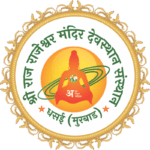Navratri is one of the most auspicious and widely celebrated Hindu festivals, dedicated to the nine divine forms of Goddess Durga. The word ‘Navratri’ is derived from Sanskrit, where ‘Nav’ means nine and ‘Ratri’ means night, signifying nine nights of devotion, fasting, and celebration. This grand festival symbolizes the victory of good over evil and is observed with immense fervor across India and various parts of the world.
Significance of Navratri
Navratri marks the victory of Goddess Durga over the demon Mahishasura, symbolizing the triumph of righteousness. Each day of Navratri is dedicated to a different form of Maa Durga, known as the Navadurga. Devotees worship these divine forms, seeking blessings for health, prosperity, and spiritual upliftment.
The Nine Days of Navratri and Their Significance
Day 1: Maa Shailputri (The Daughter of the Mountains)
Maa Shailputri is the first form of Goddess Durga, symbolizing purity and strength. She is worshipped for peace and prosperity. The color of the day is red, representing action and vigor.
Day 2: Maa Brahmacharini (The Goddess of Penance)
Maa Brahmacharini embodies devotion and penance. She blesses her devotees with wisdom and knowledge. The color blue is worn to represent tranquility and strength.
Day 3: Maa Chandraghanta (The Goddess of Courage)
She is a fierce yet compassionate form of the Goddess, adorned with a half-moon (Chandra) on her forehead. The color of the day is yellow, signifying joy and brightness.
Day 4: Maa Kushmanda (The Creator of the Universe)
Maa Kushmanda is worshipped for her power to bestow energy and strength. The color green is associated with this day, symbolizing growth and renewal.
Day 5: Maa Skandamata (The Mother of Skanda)
Maa Skandamata, the mother of Lord Kartikeya (Skanda), represents maternal love and divine grace. The color of the day is white, denoting purity and peace.
Day 6: Maa Katyayani (The Warrior Goddess)
She is the fierce form of Durga who vanquished Mahishasura. Devotees seek her blessings for courage and victory. The color orange represents strength and courage.
Day 7: Maa Kalaratri (The Destroyer of Darkness)
Maa Kalaratri is the most ferocious form of Durga, eliminating fear and negativity. The color of the day is grey, signifying destruction of evil forces.
Day 8: Maa Mahagauri (The Goddess of Purity)
Maa Mahagauri is the symbol of purity, wisdom, and peace. Devotees wear pink, representing hope and new beginnings.
Day 9: Maa Siddhidatri (The Goddess of Siddhis)
On the final day, Maa Siddhidatri blesses her devotees with spiritual knowledge and fulfillment. The color of the day is purple, symbolizing ambition and power.
Navratri Rituals and Traditions
- Fasting & Devotion: Many devotees observe fasts, consuming only satvik food such as fruits, milk, and special vrat dishes.
- Garba & Dandiya Raas: In Gujarat and Maharashtra, traditional folk dances like Garba and Dandiya Raas are performed, celebrating the divine feminine energy.
- Kanya Pujan: On the eighth and ninth days, young girls (Kanyas) are worshipped as representations of Goddess Durga, and they are offered food and gifts.
- Recitation of Devi Mahatmya: Many devotees read the Devi Mahatmya or Durga Saptashati, which narrates the glory of Goddess Durga.
Navratri Across India
- West Bengal: The festival is known as Durga Puja, where grand idols of Maa Durga are worshipped in beautifully decorated pandals.
- Gujarat & Maharashtra: The festival is marked with energetic Garba and Dandiya Raas performances.
- North India: Ramleela performances are organized, depicting the story of Lord Rama, culminating in Dussehra.
- South India: The festival is celebrated with Golu (display of dolls) and special pujas dedicated to Goddess Saraswati.
Conclusion
Navratri is not just a festival; it is a spiritual journey that reminds us of the power of devotion, discipline, and divine grace. It is a time to seek the blessings of Maa Durga, celebrate traditions, and immerse in the vibrance of Indian culture. May this Navratri bring peace, happiness, and prosperity to all!
🕉️ Jai Mata Di! 🙏


